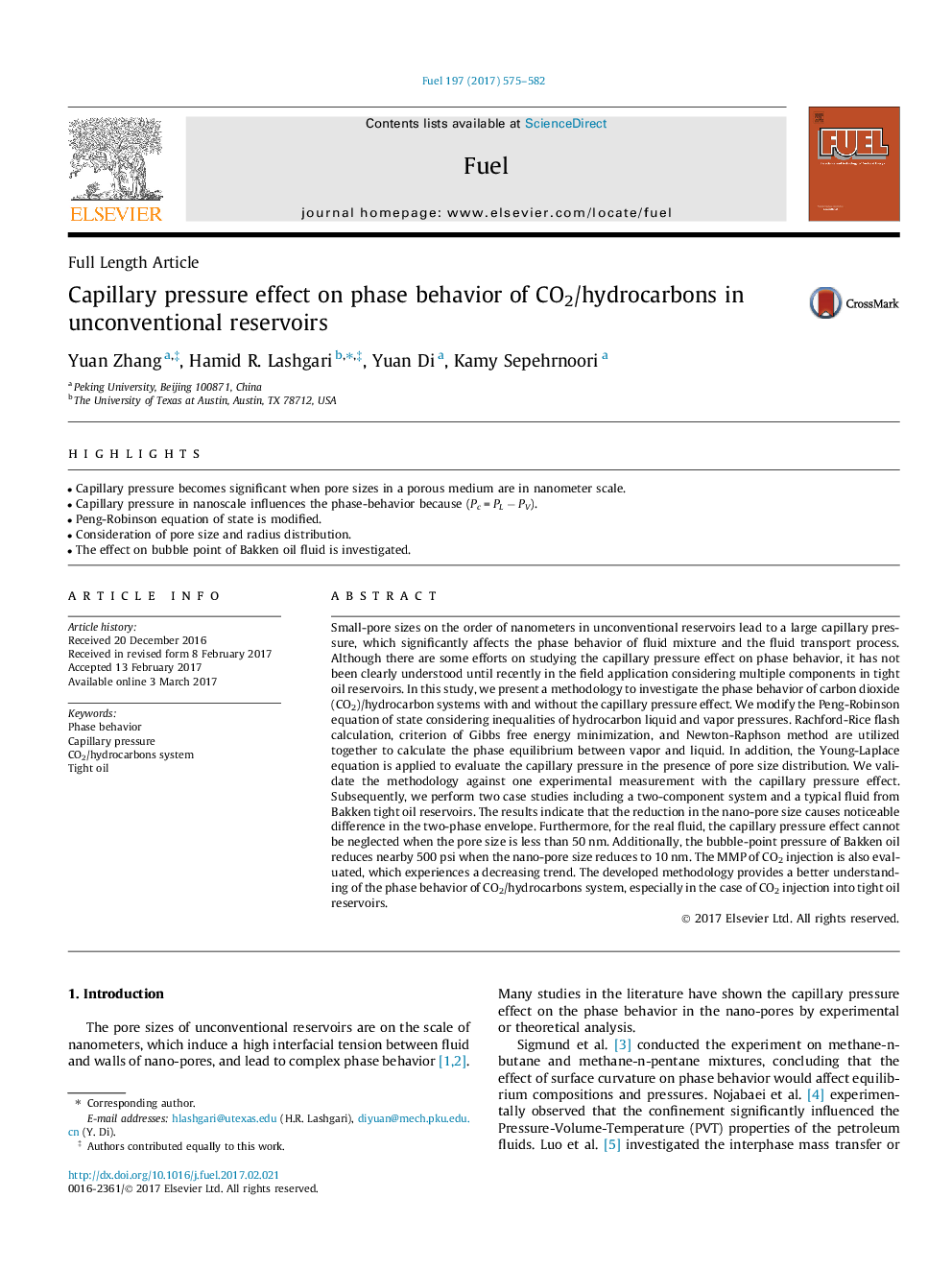| کد مقاله | کد نشریه | سال انتشار | مقاله انگلیسی | نسخه تمام متن |
|---|---|---|---|---|
| 6475318 | 1424967 | 2017 | 8 صفحه PDF | دانلود رایگان |

- Capillary pressure becomes significant when pore sizes in a porous medium are in nanometer scale.
- Capillary pressure in nanoscale influences the phase-behavior because (Pc = PL â PV).
- Peng-Robinson equation of state is modified.
- Consideration of pore size and radius distribution.
- The effect on bubble point of Bakken oil fluid is investigated.
Small-pore sizes on the order of nanometers in unconventional reservoirs lead to a large capillary pressure, which significantly affects the phase behavior of fluid mixture and the fluid transport process. Although there are some efforts on studying the capillary pressure effect on phase behavior, it has not been clearly understood until recently in the field application considering multiple components in tight oil reservoirs. In this study, we present a methodology to investigate the phase behavior of carbon dioxide (CO2)/hydrocarbon systems with and without the capillary pressure effect. We modify the Peng-Robinson equation of state considering inequalities of hydrocarbon liquid and vapor pressures. Rachford-Rice flash calculation, criterion of Gibbs free energy minimization, and Newton-Raphson method are utilized together to calculate the phase equilibrium between vapor and liquid. In addition, the Young-Laplace equation is applied to evaluate the capillary pressure in the presence of pore size distribution. We validate the methodology against one experimental measurement with the capillary pressure effect. Subsequently, we perform two case studies including a two-component system and a typical fluid from Bakken tight oil reservoirs. The results indicate that the reduction in the nano-pore size causes noticeable difference in the two-phase envelope. Furthermore, for the real fluid, the capillary pressure effect cannot be neglected when the pore size is less than 50Â nm. Additionally, the bubble-point pressure of Bakken oil reduces nearby 500Â psi when the nano-pore size reduces to 10Â nm. The MMP of CO2 injection is also evaluated, which experiences a decreasing trend. The developed methodology provides a better understanding of the phase behavior of CO2/hydrocarbons system, especially in the case of CO2 injection into tight oil reservoirs.
Journal: Fuel - Volume 197, 1 June 2017, Pages 575-582